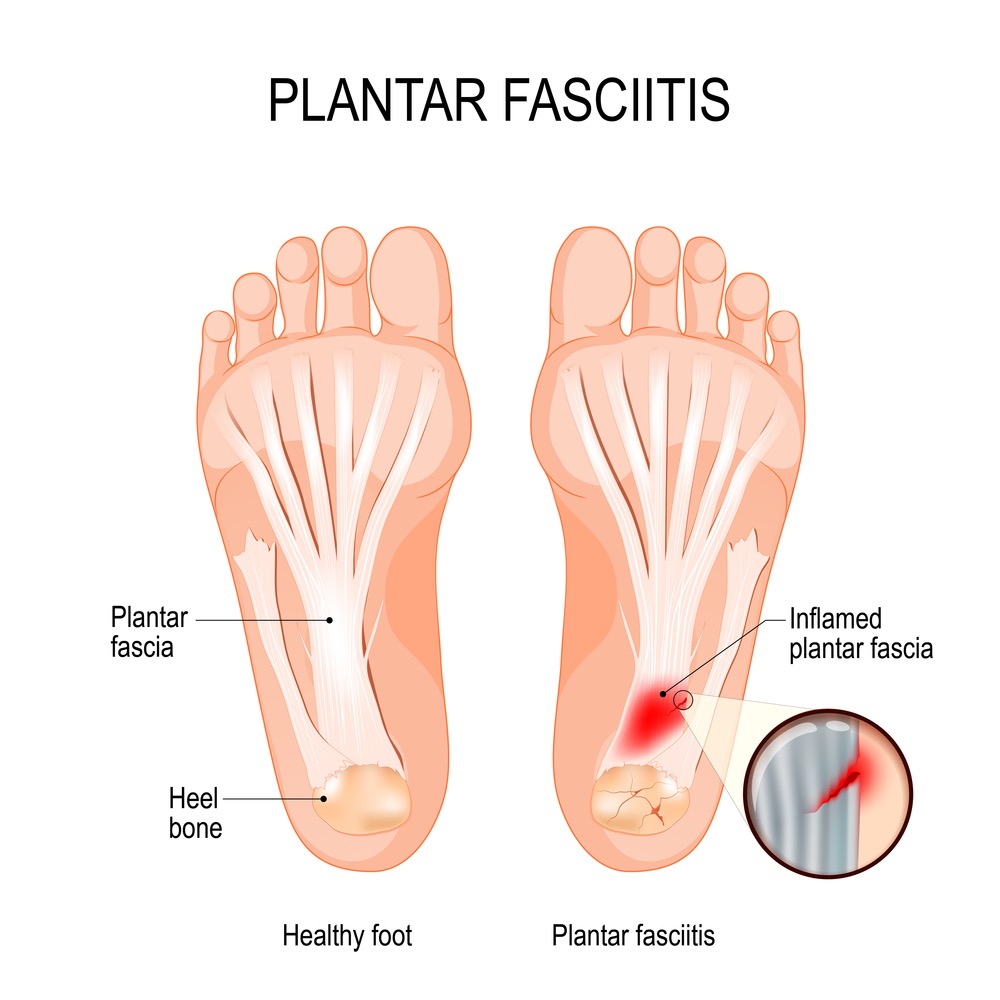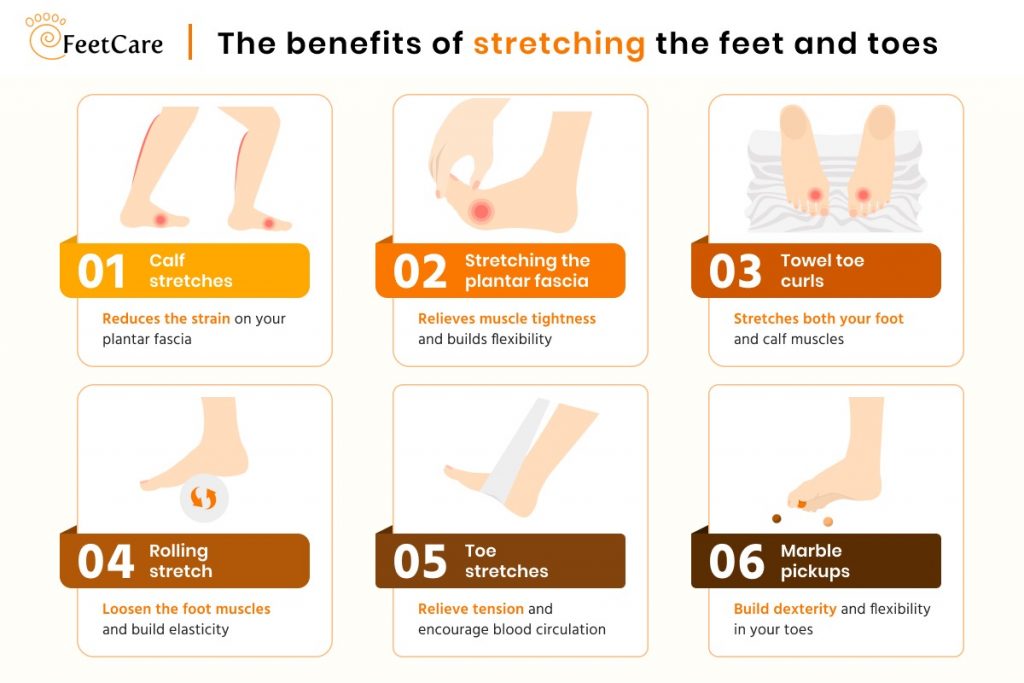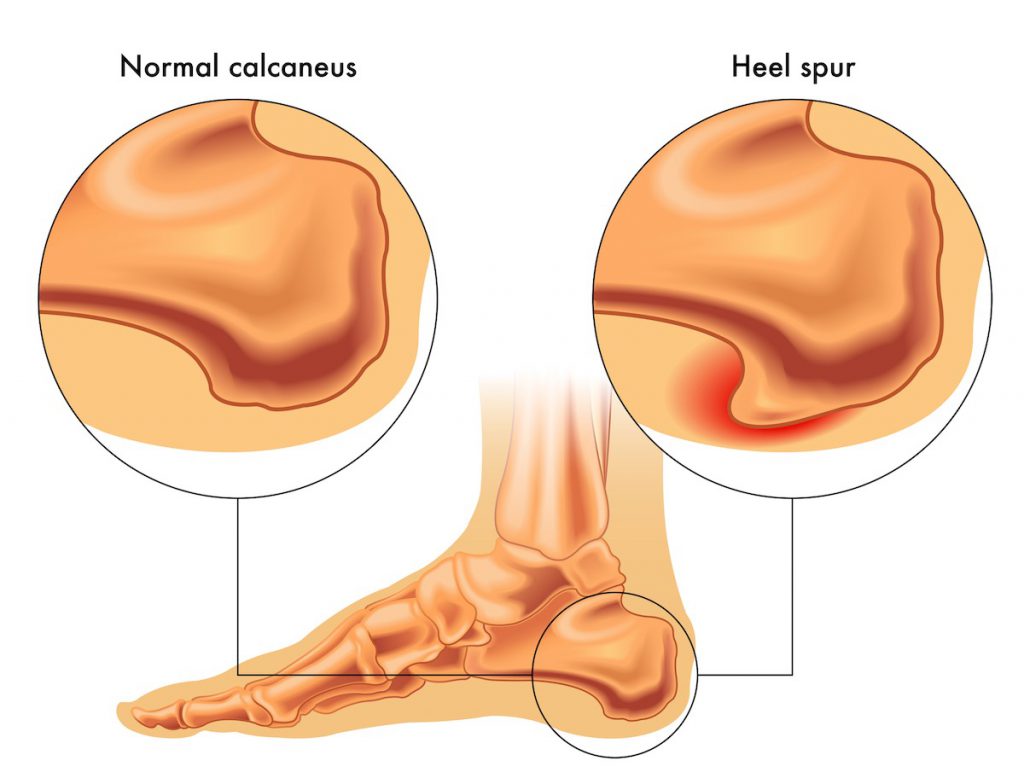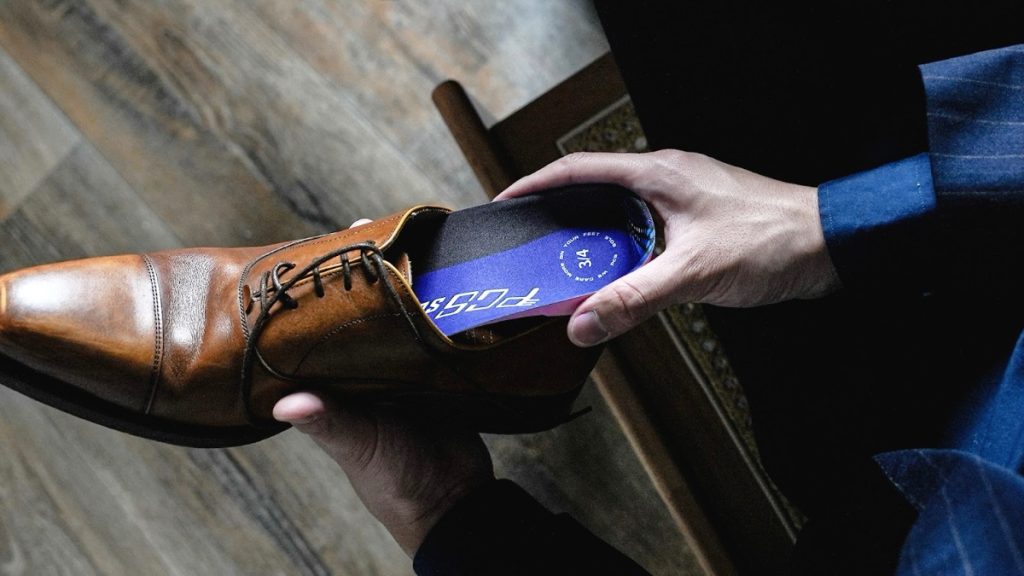If your heel is prone to pain when walking, you may have a condition known as plantar fasciitis.
Plantar fasciitis, also known as Heel Spur Syndrome, gets its name from an overuse of the ligament that runs through from your heel to the ball of your foot. This band of tissue is known as the plantar fascia.

Plantar fasciitis results from inflammation in the plantar fascia. When too much stress is placed on the tissue, overtightening and tearing may set in, leading to pain in the heel/arch of your foot.
Although the tissue recovers slightly overnight as you rest, it can still tear upon your first steps in the morning.
What are the signs and symptoms of plantar fasciitis?
Plantar fasciitis can be resolved quickly if detected early. However, if you leave it to worsen over time, it can take a while to heal.
If you’re worried that you might be developing plantar fasciitis, here’s a quick checklist for you to assess this possibility.
| Does you feel pain when: | Does the arch of your foot/heel hurts when: |
 Taking your first steps after getting out of bed in the morning Taking your first steps after getting out of bed in the morning |  Goes away after walking for about 10-15 minutes Goes away after walking for about 10-15 minutes |
 Sitting down for prolonged periods of time Sitting down for prolonged periods of time |  Is dull/sharp Is dull/sharp |
 Standing for prolonged periods of time Standing for prolonged periods of time |  Worsens and lasts longer over time Worsens and lasts longer over time |
 Climbing the stairs Climbing the stairs | |
 Standing on tip-toes Standing on tip-toes |
If you’ve checked most items in the list, you may have plantar fasciitis. Before the condition escalates, you should get it properly diagnosed. FeetCare specialists are professionally trained and will help you make an assessment.
6 foot stretches that can help to relieve plantar fasciitis
Plantar fasciitis occurs the most frequently in runners, overweight individuals, and pregnant women, due to the added weight on their ligaments. It can also build tension in surrounding muscles, resulting in complications beyond the heel.
We’re sharing with you 6 easy plantar fasciitis foot stretches that can help you relieve pain, and build strength and flexibility in your foot.
These exercises also provide rapid pain relief, and help you manage your symptoms and improve your condition over time.
1. Calf stretches
Calf stretches help to build strength and flexibility in your calves, reducing the amount of strain on the plantar fascia.
It also helps to loosen muscle tightness in the feet and calves.
- First, lean your hands against a wall.
- Place both your feet flat on the ground.
- Straighten the knee of your affected leg behind you, and bend the front knee.
You should experience a stretching sensation in the heel and calf of your straightened leg.
- Hold the position for 10 seconds.
- Do about 2-3 sets for each affected foot every day.
2. Stretching the plantar fascia
Stretching the plantar fascia can relieve muscle tightness and build flexibility and elasticity in the tissue, which helps to prevent it from developing tears.
- First, sit down on a chair
- Cross your leg with plantar fasciitis over the other leg
- Hold the affected foot with your hand
- Push your toes inwards, towards your shin.
You should feel a strain building up in the arch of your foot. - With your free hand, hold on to the bottom of your foot, and feel for any tight tendons in the plantar fascia.
You should be able to feel the difference in your plantar fascia when you are stretching. - Hold this position for 10 seconds.
- Complete about 2-3 sets for each affected foot every day.
3. Towel toe curls
Towel toe curls are a good way to stretch both the foot and calf muscles.
It strengthens the muscles and helps them to better support the plantar fascia.
These exercises are best done in the morning, right after you wake up.
We recommend not walking or placing any strain on your feet until you finish these towel toe curls.
- Place a small towel or face cloth beside your bed, so you can do the exercise right after you wake up.
- Sit on the side of your bed and place the towel on the floor.
- Place both feet flat on the floor, with your toes positioned at the centre of the towel.
- Grasp the center of the towel with your toes and curl, pulling the towel towards you.
The towel should bunch up under the arch of your foot. - Once you’ve run out of towel, relax your foot and rearrange the towel.
- Repeat this exercise five times on each foot to build up strength in your plantar fascia.
4. Rolling stretch
The rolling stretch involves loosening the foot muscles by massaging the arch of the foot with an object.
Commonly used items include rolling pins and golf balls, but if you wish to get a specialised device, you can use a foot foam roller.
The exercise for the rolling stretch is as follows.
- Sit up straight on a chair, and place a round object under the arch of your foot.
- Roll it back and forth for two minutes, stepping firmly on the object as you do so.
- This helps to exercise your foot, and will get the muscles to loosen up.
- Repeat for the other foot.
5. Toe stretches
Toe stretches help to flex your foot, increasing blood flow to the area and relieving tension in the calves.
This helps to reduce the pain associated with plantar fasciitis.
This exercise uses an elastic stretch band, easily available in sports stores or online.
- First, sit on the floor with both your legs extended straight out.
- Wrap the elastic band around the arch of your foot, holding both ends in your hands.
- Gently point the toes away from your body, until you feel a strain.
- Slowly return to your starting position.
- Repeat this 10 times for each foot.
6. Marble pickups
Marble pickups help to flex and stretch the muscles in your foot.
This exercise helps to build dexterity and flexibility.
To do this, you will need about 20 marbles.
- First, sit on a stool, with both your knees bent and your feet flat on the floor.
- Scatter your marbles around your feet, with a bowl close by.
- Pick up the marbles one at a time by curling your toes, and place them in the bowl.
- Repeat this until all 20 marbles are inside the bowl.
- Do this exercise once a day for each foot.
Can plantar fasciitis be prevented?
Plantar fasciitis can be avoided if you practise the recommended exercises regularly. However, if you already suffer from plantar fasciitis, there are non-surgical plantar fasciitis treatments to help ease the pain.
Here are 5 treatments you can do by yourself.
Wear comfortable shoes with cushioned insoles and pads
Cushioned insoles and pads help to redistribute weight along the foot, while providing extra cushioning under the ball of your foot for support. It minimises the stress and stretching of the plantar fascia during movement.
Wear arch and foot supports
Wearing arch supports help distribute pressure evenly across your feet. It also provides stability and balance as they align your body and improve your posture and balance.
Wear ankle braces
Using ankle braces can support your feet arch during the day, as it relieves the pressure placed on your fascia.
Ankle braces compress your foot and prevent it from swelling and causing pain.
Do feet stretches to build muscle support
Feet stretches can build more strength and support in your feet.
Feet stretches have been tested for maximum efficiency and are also recommended by healthcare experts.
Get plantar fasciitis sleeves
Plantar fasciitis sleeves help to reduce the inflammation of your heels and encourage better blood circulation.
They also help to prevent sprains and accidentally twisting your leg in the event of a fall.
Leaving plantar fasciitis untreated can lead to many problems
In rare cases, they may break off from the bone and float around, worsening symptoms and causing more complications.
When this happens, surgery is one of the only ways to remove the spur.
Taking medications to reduce the inflammation, or going for minimally invasive surgeries such as Tenex procedure are some plantar fasciitis treatments you can also consider.
Plantar fasciitis can occur to anyone, and it’s better to catch it before it has a chance to fully develop and cause problems.





